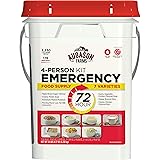Hey there! If you’ve ever found yourself in a pinch in the wilderness, knowing how to start a fire can be a literal lifesaver. But we’re not just going to scratch the surface here; we’re diving deep into fire-starting techniques. So grab a comfy seat, and let’s make fire-starting a skill you can master!
Understanding Fire Fundamentals
What Makes Fire Burn?
Before we jump into techniques, it’s super vital to know what fire is and how it works. Fire needs three components: heat, fuel, and oxygen. You can think of these as the holy trinity of fire. Without any one of these, you won’t get flames. That’s a fact!
Heat can come from various sources, like friction or sparks. Fuel is typically something combustible, like dry wood or fallen leaves. And oxygen is abundant, but positioning your fire correctly will maximize airflow, which is essential for a healthy flame.
I learned the hard way that understanding these principles helps you adapt when conditions aren’t ideal. For instance, in damp weather, you might find yourself chasing after a good dry piece of kindling – been there, done that!
Types of Fire Layouts
Once you grasp the fundamentals, you’ll want to know how to arrange your materials. Common layouts include the teepee, log cabin, and star fire. Each has its pros and cons, depending on what you need the fire for – cooking, warmth, or light.
The teepee is my go-to for quick heat because it allows for good airflow. You just stack your kindling in a cone shape and light it at the top. The flames then draw up, grabbing fuel as they ignite the larger logs below.
Each layout has its place, so I always consider my situation. Will the fire be for cooking dinner or just keeping warm overnight? Knowing the differences will serve you well.
Safety Considerations
Before you even think about striking a match, safety should be on your mind. Always ensure you’re in a safe area where your fire isn’t going to spread. And make sure you’ve got tools on hand, like a shovel or water, to extinguish the fire quickly if needed.
== > What if ... Get a FREE Subscription to PREPARE
And listen, I can’t stress this enough: Never leave your fire unattended. I had a friend who learned this the hard way, and trust me, it wasn’t pretty. Enjoying a campfire is great, but it comes with responsibility.
Another factor I’ve learned to appreciate is the weather and the surrounding environment. If it’s windy or dry, take extra precautions. Your fire should be a friend, not an enemy!
Choosing the Right Materials
Finding Firewood
When it comes to firewood, not all wood is created equal. The best firewood is dry, seasoned hardwood – think oak, hickory, or maple. They burn hotter and longer compared to softwoods like pine, which tend to produce more smoke and burn quicker.
However, when you’re in the wild, you might have to get creative. During my first solo camping trip, I spent hours looking for the perfect kindling. I learned quickly that dead branches often had just the right amount of dryness.
Don’t overlook smaller twigs and leaves when gathering materials. These make excellent initial kindling and can help you build a solid fire base. Just the other weekend, I used a mix of pine needles and twigs to get my fire going, and it worked like a charm!
Types of Tinder
Now, if you want your fire to start easily, you’ll need to find some good tinder. That can include dry grass, moss, or even bark. During my campouts, I’ve often turned to using dryer lint. Yep! It’s lightweight, flammable, and works really well.
One lesson learned here is to always test the materials around you. If it feels damp, keep searching. I made the mistake of assuming a patch of dry grass was good enough once, and let me tell you, it was a frustrating wait for sparks to take root!
Overall, the right tinder makes all the difference. A little prep in choosing your materials pays off big time when you’re ready to light that spark!
Creative Fire Starters
Sometimes, you need to get a little inventive! If you’re struggling to light a fire, you can create your fire starters. For example, cotton balls soaked in petroleum jelly or wax can be a godsend when you’re in a pinch.
I remember making my first homemade fire starters — it felt like a magic trick. Just two or three cotton balls lit up beautifully and turned what could have been a frustrating night into a cozy campfire experience.
I also like to carry some fire-starting kits that include waterproof matches or magnesium strikers. They add a level of convenience and reliability that can make all the difference in tough situations.
Get Preparedness and Self-Reliance Tips. Subscribe Now!
Mastering the Spark Techniques
Using Matches and Lighters
Let’s start with the classic: matches and lighters. While they may seem basic, I can’t tell you how many outdoor enthusiasts carry a lighter only to find it doesn’t work in the rain!
Before you head out, check that your lighter is functioning properly. I had a lighter fail me once, and it was a bummer. Now I always carry a backup lighter and waterproof matches just in case.
When using matches, be mindful of how you strike them. Angle them downward to keep the flame from blowing out. A little technique can keep your fire dreams alive, trust me!
Friction-Based Methods
If you’re feeling adventurous (or just want to impress your friends), you could try your hand at friction methods, like the bow drill or hand drill. These rely on the concept of creating heat through friction.
I’ll admit, this requires practice. I spent many afternoons in my backyard working the bow drill — it’s not as easy as you might think! But once you get it right, the satisfaction of seeing smoke turn into an ember is unbeatable.
Just remember, this method takes time and patience. If you’re worried about failing to light a fire this way, don’t hesitate to rely on more conventional methods as backups.
Using Fire Steel and Flint
Fire steel and flint is one of those old-school methods that looks super cool. You scrape the steel against the flint to create sparks that can ignite your tinder.
This method has served well for centuries, and it’s reliable. I love using it on camping trips for that rustic experience. It brings back a sense of connection to the outdoors, and it’s a conversation starter!
It’s worth practicing before you head out. I’ve had a few mishaps, but hey, practice makes perfect, right? Just ensure you have your tinder prepped and ready for those precious sparks.
Maintaining Your Fire
Adding Fuel
Keeping your fire going requires attention. Once your fire is established, this is when you start adding larger pieces of wood to keep it alive. Don’t throw too much on at once, or you’ll smother it!
I’ve been guilty of overloading the fire when I felt like a pro. But then, poof! It just went out. Balance is key. Add logs gradually, and make sure to arrange them in a way that doesn’t block airflow.
Also, don’t forget to dig around for dry wood regularly if you see your fire dying. It doesn’t have to be a chore; it can be a little adventure exploring while gathering supplies.
Controlling Temperature
As you get comfy with your fire, you might notice that controlling temperature is a skill in itself. If you want a roaring blaze, you’ll need to stack wood to optimize airflow. For simmering or cooking, consider moving your logs closer together.
It sounds simple, but honestly, it adds another layer to fire-building skills. I’ve learned to adjust my setup based on what I’m cooking or how warm I want to be.
Even just knowing when to stoke the fire or let it settle can change how your night goes in the wild. Don’t be afraid to experiment a bit!
Fire Safety Measures
Finally, let’s wrap up with some fire safety measures. Once you’ve enjoyed your fire, make sure to extinguish it properly. Use water or dirt to ensure everything is cool to the touch before leaving.
I can’t tell you how many times I’ve seen people leave a fire only to come back and find it reignited. It’s crucial to be responsible. All it takes is a small spark to ignite a larger fire, and we don’t want that!
So, always make it a habit to check your fire’s status before moving on to other activities. Mother Nature will thank you for it.
FAQ
- What are the best types of wood for starting a fire?
- Dry, seasoned hardwoods like oak and hickory work best, but softwoods like pine can also be handy if they’re dry. Just be cautious of the smoke!
- What can I use if I don’t have traditional tinder?
- Look for dry grass, leaves, or even household items like dryer lint or cotton balls soaked in petroleum jelly. They can help kickstart your fire easily.
- How can I ensure my fire doesn’t go out?
- Monitor your fuel supply and add wood gradually. Keeping the airflow optimized is crucial for a lasting and steady blaze.
- Are there any fire-building techniques I should definitely know?
- The teepee and log cabin methods are popular for different situations, so familiarize yourself with them both, along with basic striking and friction techniques.
- What’s the most common fire safety rule I should remember?
- Always fully extinguish your fire before leaving a campsite, using water or dirt. Safety should always come first!
Thanks for joining me on this fire-starting adventure. Remember, whether you’re out in the woods or just testing skills in the backyard, practice makes perfect. Happy fire starting!






